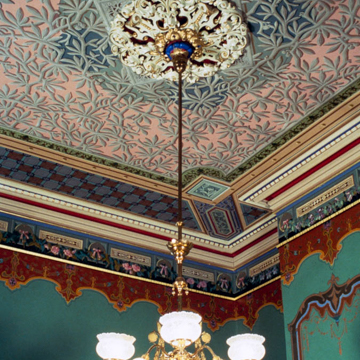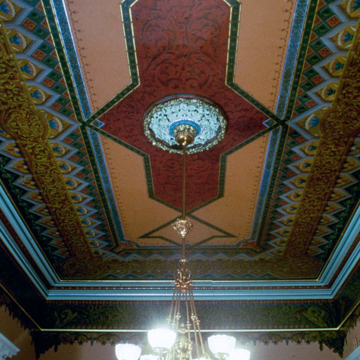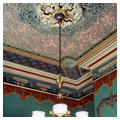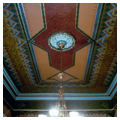You are here
Marshall Town Hall (William Prindle Livery Stable)
Located on the southeast side of Marshall's fountain circle, the town hall is an excellent and early example of adaptive reuse in architecture. It is one of Marshall's oldest commercial buildings, having served as a livery, a wagon and carriage building shop, an auto garage, and a service station before becoming the town hall. In 1929–1930, Mayor Harold C. Brooks and architect Young transformed the broad, two-story livery stable into a Colonial Revival town hall. The front facade of the utilitarian building is rough-cut, light yellowish-brown Marshall sandstone, which was taken from the banks of the Kalamazoo River, while the side walls are of fieldstone. The livery had ample segmental-arched entrances on the first floor. Brooks placed a cupola that holds a four-sided Seth Thomas clock on top of the structure's hipped roof, added a wide classical entablature and a central pedimented pavilion, and installed multipaned, double-hung windows all around and a Palladian window in the west wall to admit light to the council chamber. Perhaps Brooks was aware of the preservation and restoration work at Colonial Williamsburg at the time and was inspired to do the same for Marshall.
Writing Credits
If SAH Archipedia has been useful to you, please consider supporting it.
SAH Archipedia tells the story of the United States through its buildings, landscapes, and cities. This freely available resource empowers the public with authoritative knowledge that deepens their understanding and appreciation of the built environment. But the Society of Architectural Historians, which created SAH Archipedia with University of Virginia Press, needs your support to maintain the high-caliber research, writing, photography, cartography, editing, design, and programming that make SAH Archipedia a trusted online resource available to all who value the history of place, heritage tourism, and learning.


















